Viewing search results for "Outer Banks History Center"
View All Posts
 Additional issues of the Hyde County Herald, published out of Swan Quarter, are now available on DigitalNC. These were provided by the Outer Banks History Center and scanned at our Elizabeth City office. Dating from 1939-1945, they join later issues from 1948-1957 which were already shared online thanks to the efforts of staff at Wilson Special Collections Library for the National Digital Newspaper Program.
Additional issues of the Hyde County Herald, published out of Swan Quarter, are now available on DigitalNC. These were provided by the Outer Banks History Center and scanned at our Elizabeth City office. Dating from 1939-1945, they join later issues from 1948-1957 which were already shared online thanks to the efforts of staff at Wilson Special Collections Library for the National Digital Newspaper Program.
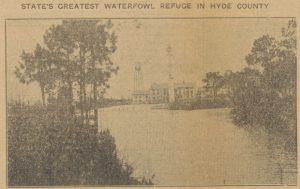 One frequently mentioned Hyde County location is Lake Mattamuskeet, the largest natural freshwater lake in the state. In 1934 it was established as a National Wildlife Refuge stewarded by the U. S. Fish and Wildlife Service and it remains a crucial refuge for birds and other wildlife. The Herald talks about the importance of the lake and its wildlife for tourism and the ecosystem.
One frequently mentioned Hyde County location is Lake Mattamuskeet, the largest natural freshwater lake in the state. In 1934 it was established as a National Wildlife Refuge stewarded by the U. S. Fish and Wildlife Service and it remains a crucial refuge for birds and other wildlife. The Herald talks about the importance of the lake and its wildlife for tourism and the ecosystem.
During the war years the paper turns to local efforts to support the troops as well as news items about Hyde County residents fighting in the war. The investments in the Naval Auxiliary Air Station at Manteo and facilities at a naval base on Ocracoke show the war’s financial and developmental impact on the coast.
You can view all of the issues of the Hyde County Herald that we have available here. All items we’ve scanned for the Outer Banks History Center are available through their contributor page. Everything we have about Hyde County can be found on the Hyde County page.
 Thanks to the staff at the Outer Banks History Center, we now have a complete run of the 1941 Tyrrell Tribune available online. These papers were scanned at our office in Elizabeth City.
Thanks to the staff at the Outer Banks History Center, we now have a complete run of the 1941 Tyrrell Tribune available online. These papers were scanned at our office in Elizabeth City.
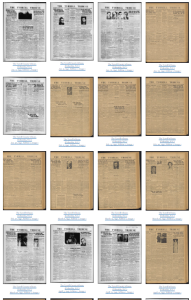
Search results showing the 1941 front pages let you easily see which issues are from microfilm and which from print.
North Carolina has an astounding amount of newspaper on microfilm thanks to efforts of the State Archives, newspaper publishers, local libraries, and other cultural heritage institutions. One thing we really love to do is use DigitalNC to join together microfilmed issues with print issues that have never been microfilmed. The Tyrrell Tribune is one of these cases.
For us, digitizing from microfilm is more cost-effective than digitizing from print. In addition, many papers that were microfilmed were disposed of when organizations were unable to afford storage and care. Microfilmed copies may be the only versions still available. However, there are cases where print issues held by our partners fill in for what was never microfilmed and the 1941 Tyrrell Tribune is a great example.
Published out of Columbia, N.C., the Tribune covers news about local government, coastal industry, agriculture, and events. You can see all of the issues that we have available from the Tribune here. All items we’ve scanned for the Outer Banks History Center are available through their contributor page. Everything we have about Tyrrell County can be found on the Tyrrell County page.

Another newspaper title from the eastern part of our state has been added to our digital collections thanks to our partner, the Outer Banks History Center. These issues of The Seashore News were published for the Nags Head, Kill Devil Hills, and Kitty Hawk beach communities in 1939.
One article from the June 8, 1939 issue describes a different beach scene than many of us are used to today.

“Dare County is being reborn,” it begins. “Where only a year or two ago the eye was greeted with vast stretches of bare sand and course beach grass, upon which herds of stunted cattle eked out a miserable existance [sic], today is springing to life lush vegetation, acres of wild flowers and trees and flowering shrubs of a hundred varieties.”
The article goes on to describe how the “Stock Law” passed in 1937 by the State Legislature helped eliminate the cattle, wild horses, and “scuttling flocks of mangy sheep” from the beaches. The author also claims that the beaches were a “veritable paradise of verdure” when colonists first arrived and that it was due to the livestock that the beaches became “a territory that was fast taking on the arid aspects of a desert.”
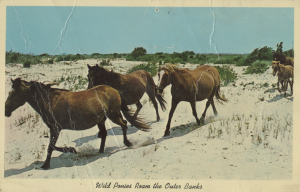
Whether the introduction of vegetation to the area would be considered “conservation” by today’s standards isn’t totally clear, though the NC Wildlife Resources Commission doesn’t exactly describe costal habitats as a “‘delicate garden abounding with all kinds of odiferous flowers.'”
You can see all issues of The Seashore News here, and you can browse all of our digital newspapers by location, type, and date in our North Carolina Newspapers collection. To learn more about the Outer Banks History Center, you can visit their partner page and their website.

Thanks to our partner, The Outer Banks History Center, we now have every issue of The Dare County Times from 1935-1945 up on DigitalNC! In these papers we have stories about the smallest school in North Carolina (only seven students!), the 100th performance of Paul Green’s The Lost Colony, and the fire that devastated much of Manteo on September 11th, 1939.
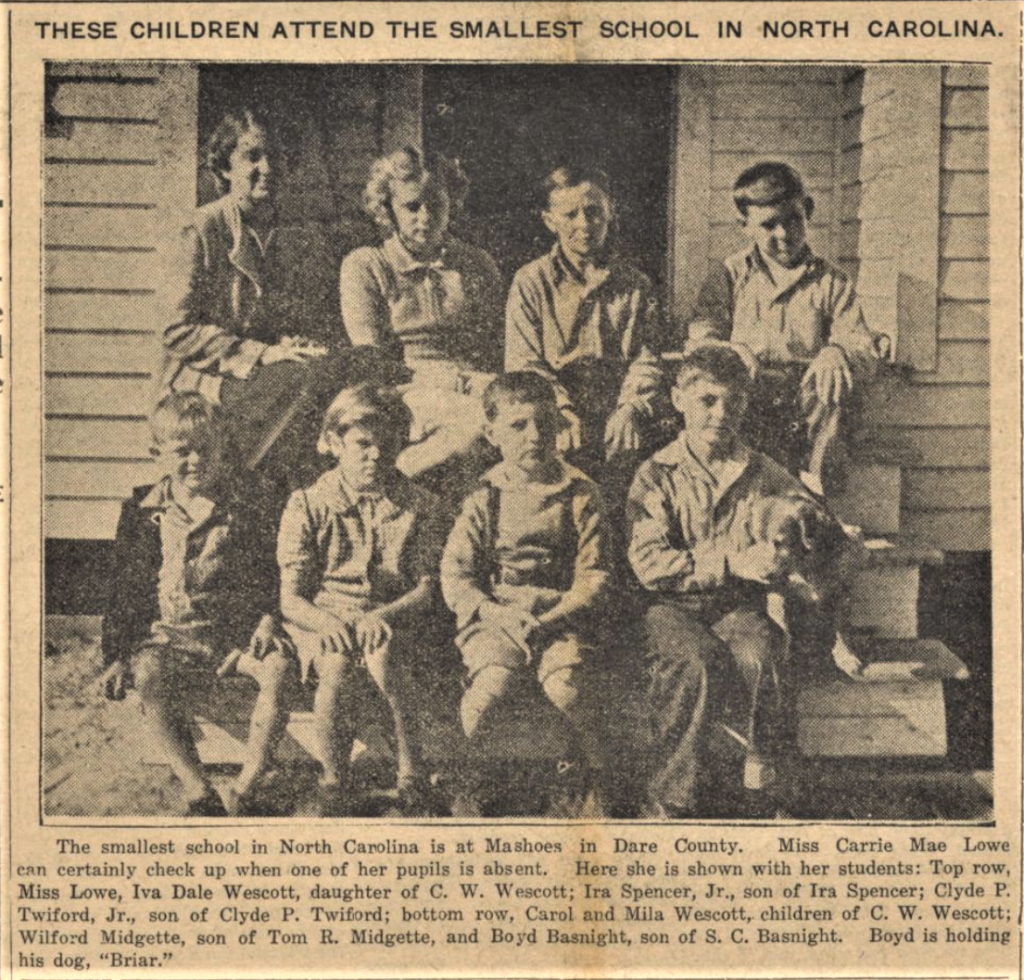
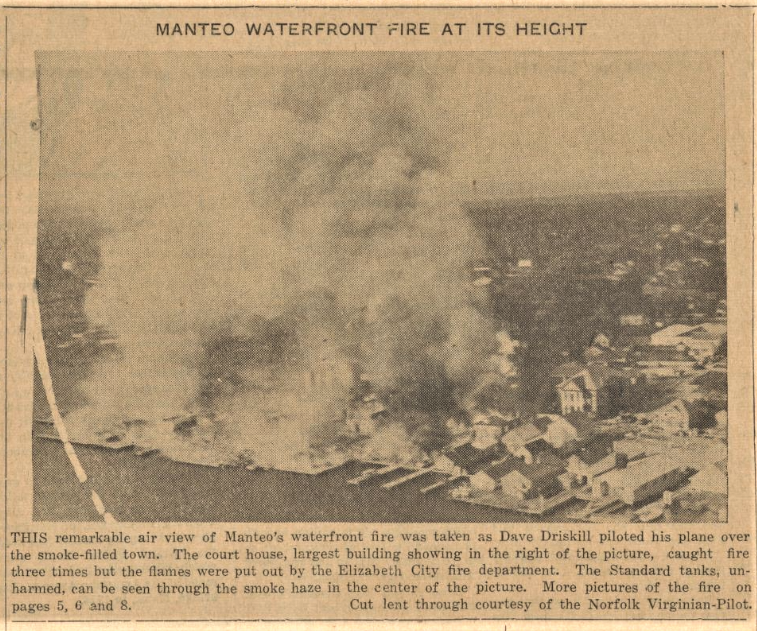
The Manteo fire broke out in the early hours of that September morning and destroyed 21 buildings in just three hours. Since the town had limited supplies to fight the fire, trucks from neighboring communities had to be called in to help contain the flames and one even came down from Norfolk, Virginia to offer aid. Miraculously, not a single person was injured amidst the chaos.
If you would like to see the rest of the available issues of The Dare County Times, you can find them here. You can also browse our entire collection of North Carolina newspapers and visit our contributing partners page.

A new title has been added to our Newspapers of North Carolina Collection thanks to the Outer Banks History Center. These issues of The Nags Tale, a cleverly-named paper from Nags Head, N.C., contain coverage from July and August 1938.
On of the first major news stories on the front page of this paper is a review of the local rendition of Paul Green’s The Lost Colony, first performed about a year earlier. The play is based on the true story of the lost colony of Roanoke Island in Dare County, N.C. (neighboring Nags Head).
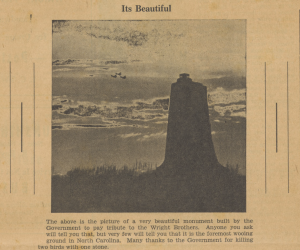
The Wright Monument, or what the caption writer calls, “the foremost wooing ground in North Carolina.”
The reviewer notes, first and foremost, the incredibly large cast of the production, commenting, “There are 186 people in the company of ‘The Lost Colony,’ and when Sir Walter’s colony passed through an inlet that cut the banks between Nags Head and the Wright Memorial, there were only 108 people in the expedition come to lay the foundation of an empire.”
Despite the unusually large cast (which doesn’t include the crew members, the reviewer points out), the production seemed to be a hit among the residents of the island.
You can see all available issues of The Nags Tale here or browse our Newspapers of North Carolina Collection by location, type, and date. To see more materials from the Outer Banks History Center, you can visit their partner page and their website.
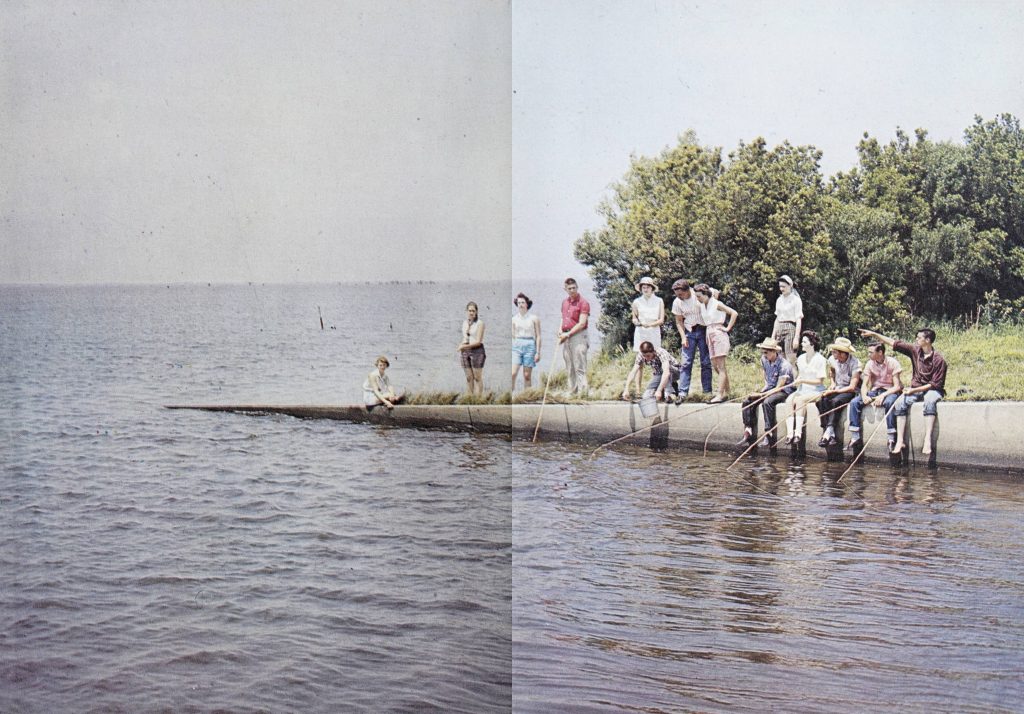
From the 1960 Quarterian, Swan Quarter’s High School Yearbook
Today we’re highlighting recently added yearbooks from a number of eastern North Carolina high schools from the 1940s to early 1960s. We lack a lot of yearbooks from the easternmost counties in North Carolina so it’s always a pleasure to add more. This batch includes a range of schools in a variety of counties:
Beaufort County
Chowan County
Dare County
Hyde County
Tyrrell County
Washington County
These yearbooks were contributed for digitization from a private individual, and the Outer Banks History Center is acting as contributor. Take a look at other high school yearbooks from the Outer Banks and nearby counties on our high school yearbooks page.
If you’re a big fan of Lin-Manuel Miranda’s hit musical Hamilton (based on the life of Alexander Hamilton), you may remember the song that Aaron Burr sings about his daughter, “Dear Theodosia.” But what you may not know is that Theodosia Burr’s story comes to a head (that joke will make sense in a minute) in North Carolina.

Theodosia Burr was primarily raised by her father and received the kind of education that was typically reserved for the men of her time. She had a strong relationship with her father and admired him greatly, according to her letters. Among the country’s early framers, Aaron Burr was one of the few early defenders of women’s rights (7:18) (due partially to the influence of Theodosia Prevost, Theodosia Burr’s mother).
Aaron Burr’s dedication to Theodosia’s education helped her become one of the most distinguished women in early American society—and one of the most sought-after. She was apparently pursued by the artist John Vanderlyn and the writer Washington Irving. Vanderlyn allegedly painted Theodosia’s eye as a “memento of his love” (10:32) and wore it on his lapel. The most appealing suitor, though, was Joseph Alston, who would go on to become governor of South Carolina. They were married in February 1801 in Albany, New York (11:34). In 1802, Theodosia gave birth to a son, Aaron Burr Alston (15:09).
In 1807, Aaron Burr was tried and acquitted of treason, leaving his political reputation in a sorry state. To escape the negative attention, he went into self-imposed exile in England, where he stayed for four years. The separation was apparently hard on Theodosia, who didn’t see her father during that period. Then, in 1812, her son died of malaria at the age of 10 (19:50), leaving her even weaker and and more depressed.
When Aaron Burr finally returned to New York in June of 1812, Theodosia was desperate to reunite. However, her poor health made her family worry about travel on land, and the ongoing war meant that most ships had been seized by the Navy to fight the British (20:14). Finally, in the fall of 1812, Alston secured a small pilot boat, The Patriot, to take Theodosia up the East Coast from Charleston to New York. As Oscar Stradley explains (5:26), the boat was designed to sail close to the shore and arrive in New York in 5 to 6 days. Theodosia and the crew of The Patriot left Charleston on December 30, 1812.
A quick sidebar is necessary here to explain what happened next—and it involves our old friend Hamilton. As many North Carolinians know, the Outer Banks has a long history as a treacherous area for sailors, especially on dark nights, when the coastline is hard to see (not to mention the threat of pirates, which we’ll get to in a minute). Alexander Hamilton, who was personally familiar with the “graveyard of the Atlantic,” used his influence within the Washington and Adams administrations to get funding for lighthouses (1:50). He was successful in securing funding for one famous gal in 1794: Cape Hatteras.
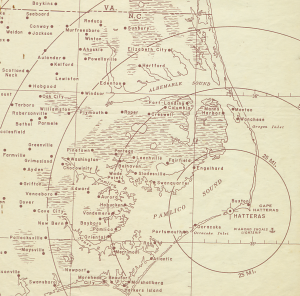 Although Cape Hatteras provided some light for ships around Hatteras and Ocracoke by the time it was lit in 1803, by 1812, there still wasn’t good lighting around Nags Head, which is to the north (close to Kitty Hawk and Kill Devil Hills). This set up the perfect opportunity for land pirates in the area.
Although Cape Hatteras provided some light for ships around Hatteras and Ocracoke by the time it was lit in 1803, by 1812, there still wasn’t good lighting around Nags Head, which is to the north (close to Kitty Hawk and Kill Devil Hills). This set up the perfect opportunity for land pirates in the area.
On dark nights (which are especially common in the fall and winter in the Outer Banks), pirates would lure ships aground with a sneaky trick: they would tie a lantern to the neck of the ponies commonly found on the islands and lead them up and down the hills (6:48). From the perspective of boats on the water, this looked a lot like the light on another ship bobbing nearby (a “nag” is a name for an old horse).
Although the details of what happened to Theodosia and the crew of The Patriot are still a bit of a mystery, accounts of pirates that surfaced in the 1830s led people to believe that the boat was taken in by this trick at Nags Head. Stradley notes that the crew may have been trying to determine their location when they accidentally ran ashore and fell victim to pirate murder (8:20).
The reason that we think Theodosia made it to the Outer Banks comes down to one enticingly-vague clue: a portrait that is probably of Theodosia. In Stradley’s telling, Theodosia escaped the initial pirate attack with the portrait of herself, which she intended to give to her father when she arrived in New York. The pirates may have left her on the beach, he posits, because of superstition surrounding people with mental illness, or people “whose minds had been taken by God” (10:59).
The portrait was rediscovered by Dr. William Poole, a physician from Elizabeth City who made a house call to a small fishing cabin on Nags Head in 1869 (12:06). Apparently, the owner of the cabin gave the portrait as payment for medical treatment. The portrait has a strong resemblance to Theodosia’s earlier portraits, and when it was discovered, some of her surviving family members confirmed the likeness (39:10).
Stradley tells this part of the story as if Dr. Poole was called to treat Theodosia herself (who, in 1869, would have been in her late eighties). Before Dr. Poole could take the portrait, however, Theodosia allegedly grabbed it off the wall, ran out of the cabin, and disappeared into the night (she was a sprightly eighty-six) (12:55). The portrait was later found washed up on the beach, and Theodosia was assumed to have drowned.
Another version, explained by Marjorie Berry, historian for Pasquotank County, says that Dr. Poole was called into the cabin of Mrs. Polly Mann, a fisherman’s widow (27:30). The portrait stood out in the otherwise plain cabin, so Dr. Poole asked where it came from. Mrs. Mann explained that her old beau, Joseph Tillet, had been one of the ship’s wreckers, and that he had gifted her two black dresses and the portrait, which he had taken as his share of the loot. (In this version, the wreckers had found the ship already empty when they arrived.)
In contrast, the report that Aaron Burr received, according to Berry, was that Theodosia was drowned by a storm. Since British ships were waiting off the coast of North Carolina (they were, after all, in a war), one admiral sent Burr a message describing a rough storm that hit the Outer Banks on January 2, 1812—around the time that The Patriot would have been there (29:44). The fact that there was a huge storm in the area is a detail missing from all the pirate confessions that came forward, leaving some doubt as to their veracity.
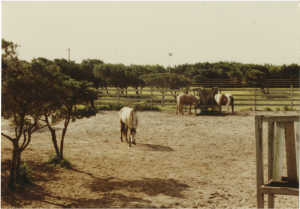
Horses on Ocracoke Island
Whatever happened to Theodosia Burr, the story of her life and disappearance has been told and retold in Northeastern North Carolina many times; a copy of her portrait is on display in the Our Story Exhibit at the Museum of the Albemarle. You can hear the Oscar Stradley’s full version of the story here (courtesy of Mitchell Community College) and Marjorie Berry’s version in the recording of “History and Highballs: Theodosia Burr” from the North Carolina Museum of History.
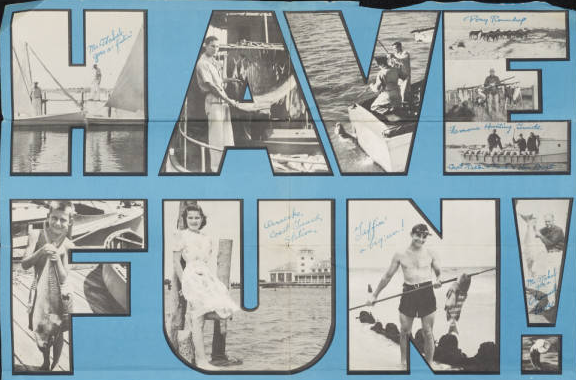
Brochure for Ocracoke Island, which continues “Have the time of your life at ‘Bermuda of the USA.'”
New materials from Ocracoke Preservation Society have been digitized and added to DigitalNC. The materials include photographs and film negatives, showing the Ocracoke community during the mid to late twentieth century, including schools, athletics, fishing, events, and people. There is also a collection of materials from Franklin Miller Cochran, a pilot and writer of Ocracoke Island. He flew passengers between the island and mainland North Carolina and wrote extensively about his experience as a pilot and citizen of the Outer Banks. His largest manuscript, The Outer Banks — Today and Yesterday, is about the history of the Outer Banks. Additionally, correspondence between Cassius M. Clay and several citizens of Ocracoke has been digitized. Other ephemera, such as brochures, maps, business cards, and post cards are also in the collection.
Learn more from our past blog post about Ocracoke and the scrapbooks we digitized. You can see more from Ocracoke Preservation Society on their contributor page or their website.
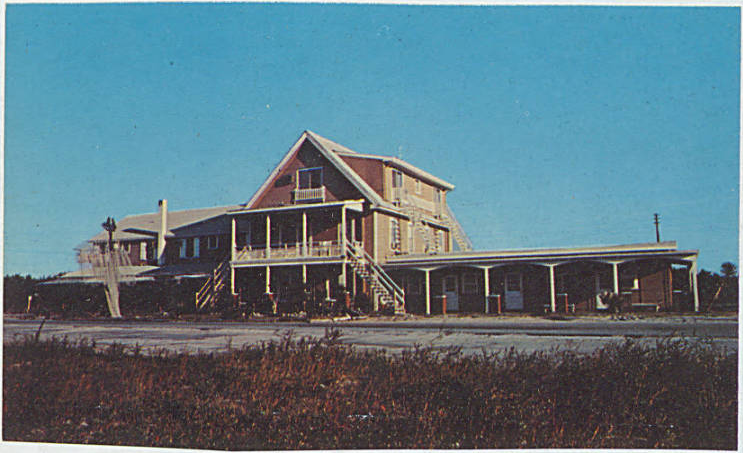
The Island Inn, Ocracoke, N.C.
 Additional issues of the Hyde County Herald, published out of Swan Quarter, are now available on DigitalNC. These were provided by the Outer Banks History Center and scanned at our Elizabeth City office. Dating from 1939-1945, they join later issues from 1948-1957 which were already shared online thanks to the efforts of staff at Wilson Special Collections Library for the National Digital Newspaper Program.
Additional issues of the Hyde County Herald, published out of Swan Quarter, are now available on DigitalNC. These were provided by the Outer Banks History Center and scanned at our Elizabeth City office. Dating from 1939-1945, they join later issues from 1948-1957 which were already shared online thanks to the efforts of staff at Wilson Special Collections Library for the National Digital Newspaper Program.  One frequently mentioned Hyde County location is Lake Mattamuskeet, the largest natural freshwater lake in the state. In 1934 it was established as a National Wildlife Refuge stewarded by the U. S. Fish and Wildlife Service and it remains a crucial refuge for birds and other wildlife. The Herald talks about the importance of the lake and its wildlife for tourism and the ecosystem.
One frequently mentioned Hyde County location is Lake Mattamuskeet, the largest natural freshwater lake in the state. In 1934 it was established as a National Wildlife Refuge stewarded by the U. S. Fish and Wildlife Service and it remains a crucial refuge for birds and other wildlife. The Herald talks about the importance of the lake and its wildlife for tourism and the ecosystem. 














